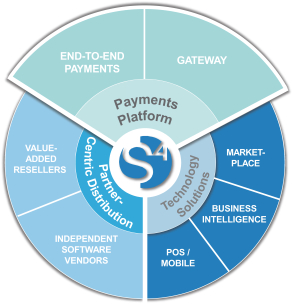The information in this preliminary prospectus is not complete and may be changed. These securities may not be sold until the registration statement filed with the Securities and Exchange Commission is effective. This preliminary prospectus is not an offer to sell nor does it seek an offer to buy these securities in any jurisdiction where the offer or sale is not permitted.
Subject to completion. Dated , 2020.
Shares

Shift4 Payments, Inc.
Class A Common Stock
This is an initial public offering of shares of Class A common stock of Shift4 Payments, Inc. We are selling shares of Class A common stock. The selling stockholders identified in this prospectus are offering an additional shares of our Class A common stock.
Prior to this offering, there has been no public market for the Class A common stock. It is currently estimated that the initial public offering price per share of Class A common stock will be between $ and $ . We intend to apply to list our Class A common stock on the under the symbol “ .”
We will have two classes of common stock outstanding after this offering: Class A common stock and Class B common stock. Each share of our Class A common stock entitles its holder to one vote per share and each share of our Class B common stock entitles its holder to votes per share on all matters presented to our stockholders generally. Immediately following the consummation of this offering, all shares of our Class B common stock will be held by Searchlight (as defined below) and our Founder (as defined below), which combined will represent approximately % of the voting power of our outstanding common stock after this offering (or approximately % if the underwriters exercise in full their option to purchase additional shares).
We will be a holding company, and upon consummation of this offering and the application of proceeds therefrom, our principal asset will consist of (i) the LLC Interests (as defined below) that we purchase directly from Shift4 Payments, LLC and certain of the Continuing Equity Owners (as defined below) with the proceeds from this offering and (ii) the LLC Interests that we acquire from the Former Equity Owners (as defined below) in connection with the consummation of the Transactions (as defined below), collectively representing an aggregate % economic interest in Shift4 Payments, LLC. Of the remaining % economic interest in Shift4 Payments, LLC, % will be owned by Searchlight through their ownership of LLC Interests and % will be owned by our Founder through his ownership of LLC Interests.
We will be the sole managing member of Shift4 Payments, LLC. We will operate and control all of the business and affairs of Shift4 Payments, LLC and, through Shift4 Payments, LLC and its subsidiaries, conduct our business.
Following this offering, we will be a “controlled company” within the meaning of the rules. See “Our Organizational Structure” and “Management—Controlled Company Exception.”
We are an “emerging growth company,” as defined in Section 2(a) of the Securities Act of 1933, as amended, and will be subject to reduced disclosure and public reporting requirements. This prospectus complies with the requirements that apply to an issuer that is an emerging growth company.
Investing in our Class A common stock involves risks. See “Risk Factors” beginning on page 22 to read about factors you should consider before buying shares of our Class A common stock.
Neither the Securities and Exchange Commission nor any other regulatory body has approved or disapproved of these securities or passed upon the accuracy or adequacy of this prospectus. Any representation to the contrary is a criminal offense.
| Per Share |
Total | |||||||
| Initial public offering price |
$ | $ | ||||||
| Underwriting discounts and commissions(1) |
$ | $ | ||||||
| Proceeds, before expenses, to Shift4 Payments, Inc. |
$ | $ | ||||||
| Proceeds, before expenses, to the selling stockholders |
$ | $ | ||||||
| (1) | We have agreed to reimburse the underwriters for certain expenses in connection with this offering. See “Underwriting.” |
The underwriters have the option to purchase up to an additional shares of Class A common stock from us and the selling stockholders at the initial price to public less the underwriting discount within 30 days of the date of this prospectus.
The underwriters expect to deliver the shares of Class A common stock against payment in New York, New York on , 2020.
(listed in alphabetical order)
| Citigroup | Credit Suisse | Goldman Sachs & Co. LLC |
Prospectus dated , 2020.



